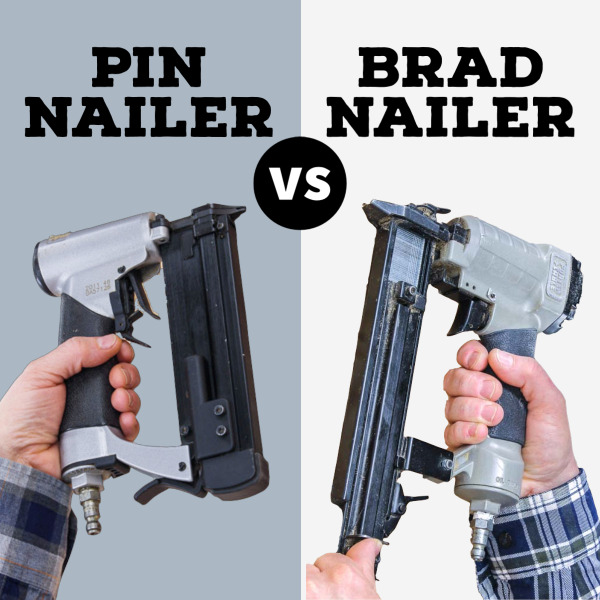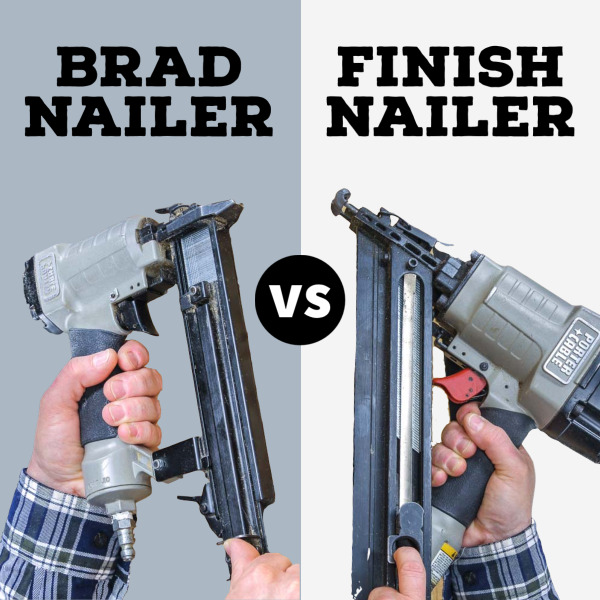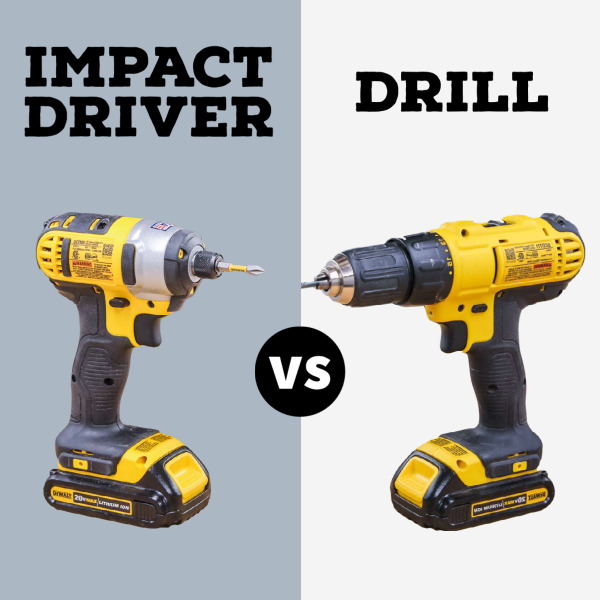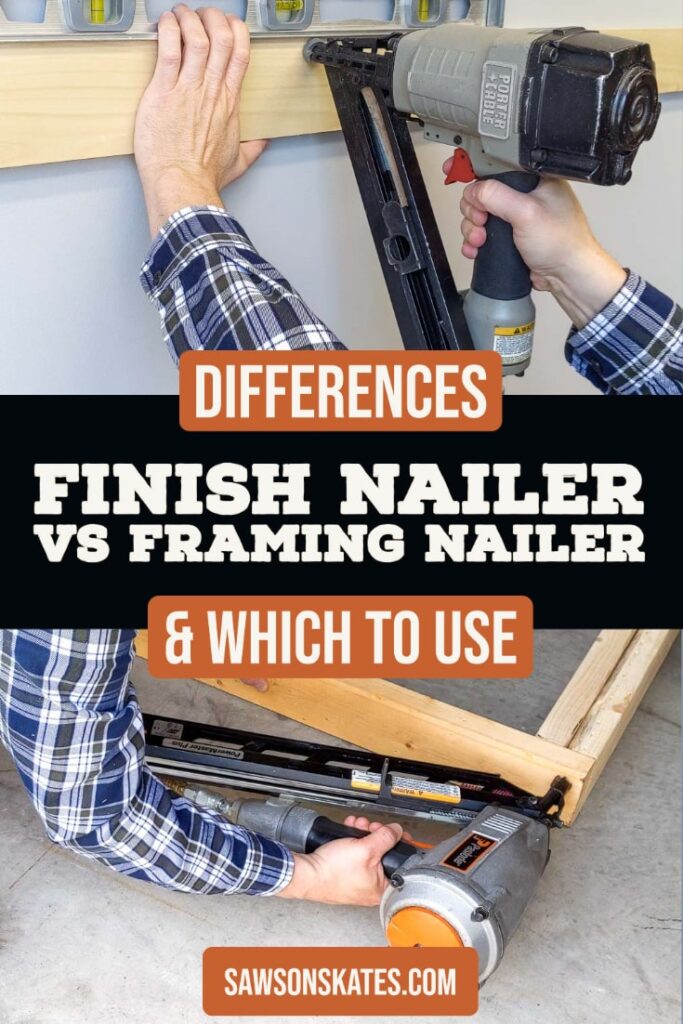Finish Nailer vs Framing Nailer (Differences + Which to Use)
Wondering if you need a finish nailer or framing nailer? This side-by-side comparison breaks down the differences, plus which tool is best for your project.
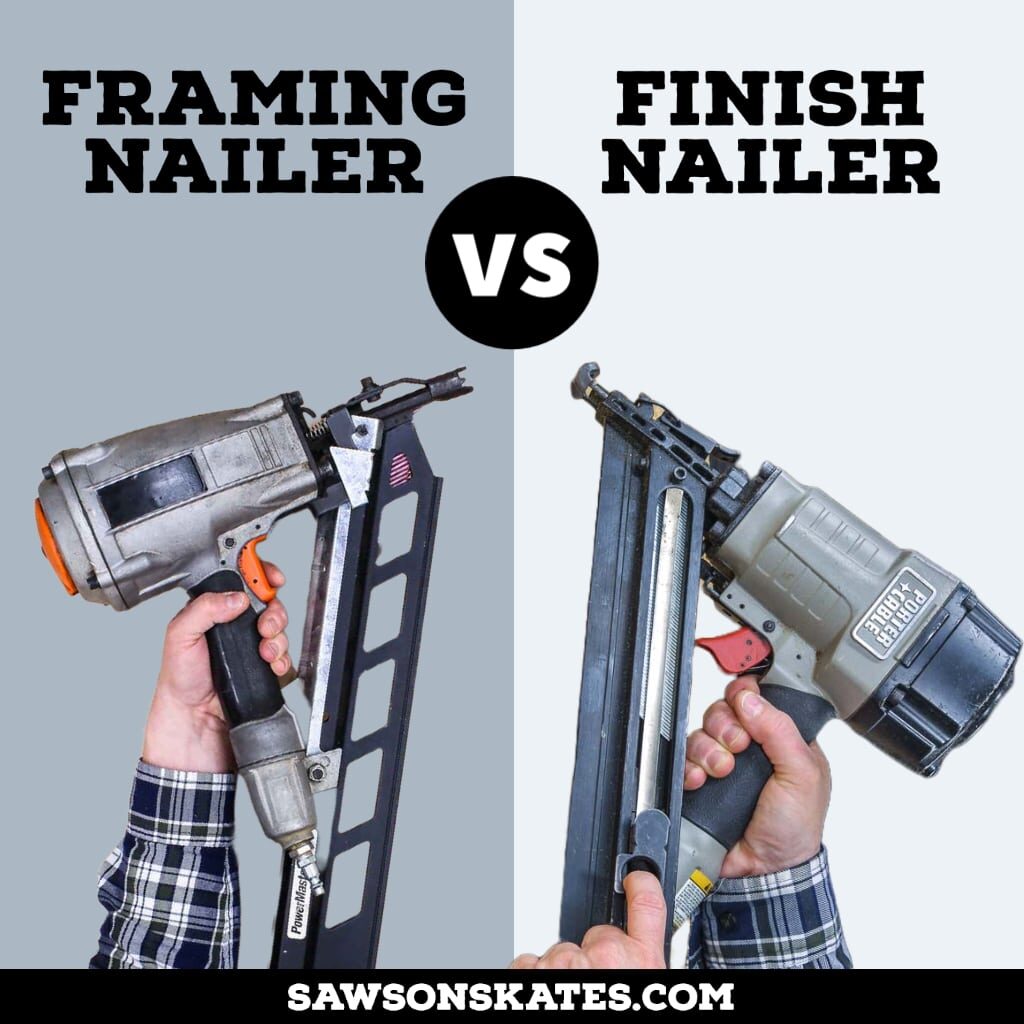
There are several varieties of nailers to choose from when it comes to nailing. Two of the most popular are the finish nailer and the framing nailer. Though they both drive nails into wood, they have some key differences. In this article, we will explain what those differences are and when you should use each type of nailer. Let’s get started!
This tutorial contains affiliate links to supplies and tools. Purchases made using these links help support the Saws on Skates website and allows me to share more projects and tips with you. There is no cost to you for using these links. Visit my site policies for more information.
Table of Contents
- What is a Framing Nailer?
- What are Framing Nailers Used For?
- Framing Nailer Pros and Cons
- What is a Finish Nailer?
- What are Finish Nailers Used For?
- Finish Nailer Pros and Cons
- What’s the Difference Between a Framing Nailer and a Finishing Nailer?
- Should I Buy a Framing Nailer or Finish Nailer?
- Pneumatic Nailers vs Cordless Nailers
- Frequently Asked Questions
What is a Framing Nailer?
A framing nailer is a heavy-duty tool used to drive large nails into thick material. It uses 8-gauge to 12-gauge nails which range in diameter from 0.113 to 0.162-inches and range in length from 1-¼ inches to 3-½ inches.
Related: How to Use a Tape Measure Correctly (Tips for Success)
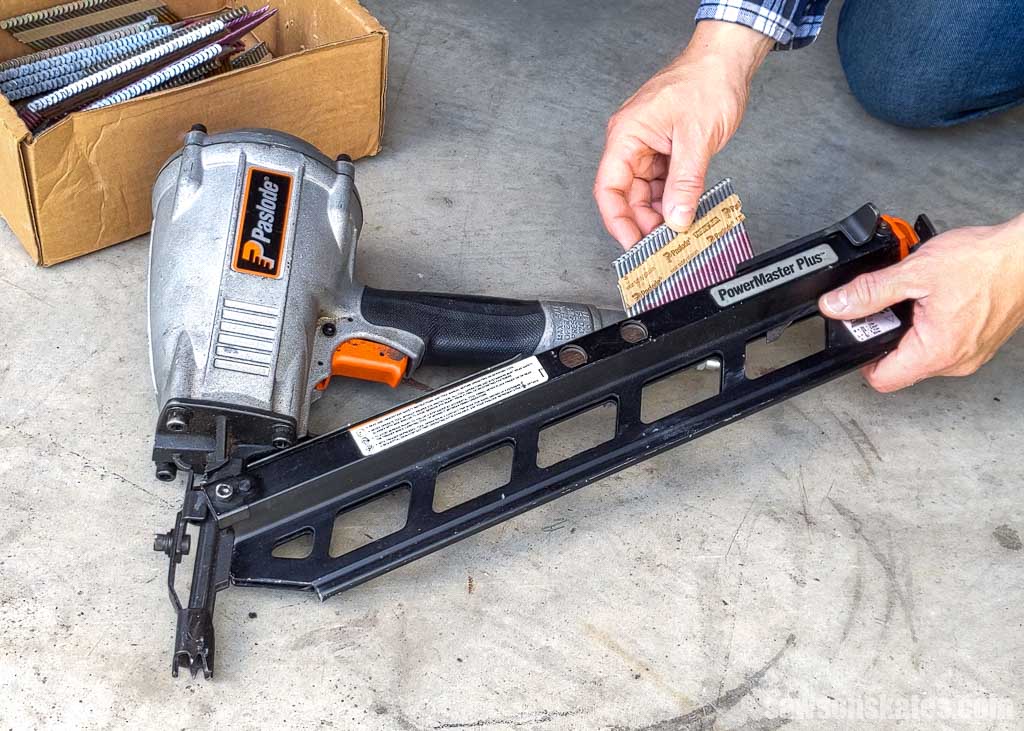
Gauge is the number of nails that fit within an inch. The higher the gauge of a nail, the smaller it is. For example, you can fit 12 nails per inch with a 12-gauge nail, whereas with larger 8-gauge nails, you can only fit 8 per inch.
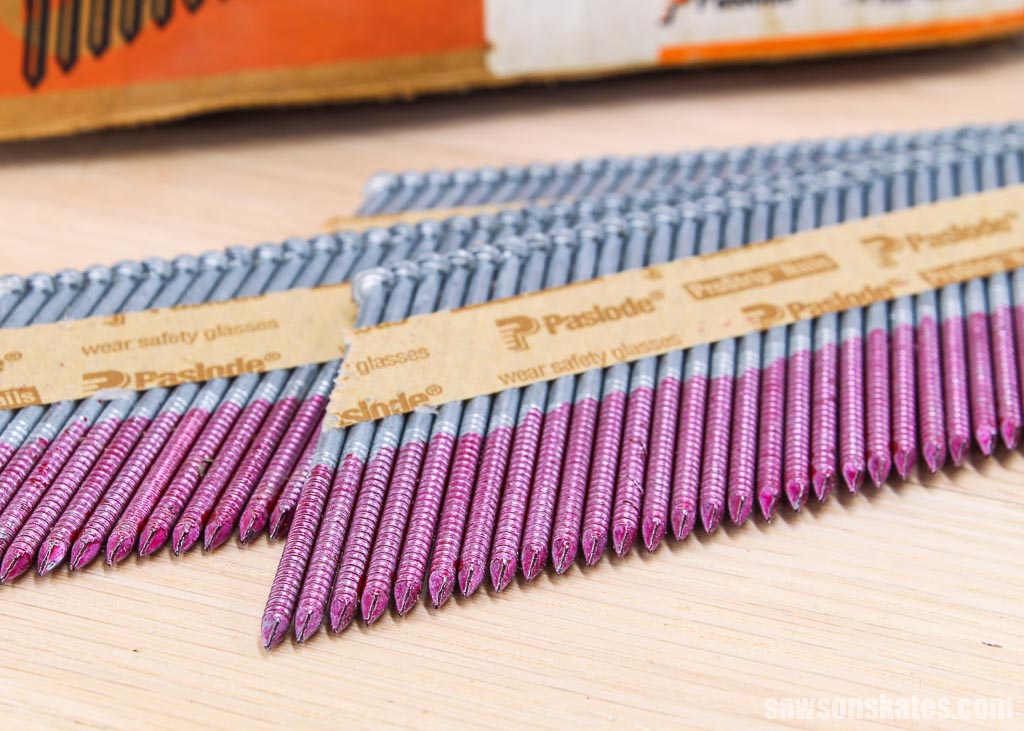
There are three types of nail heads commonly used in framing nailers:
- Full round head nails have a large, round head centered over the shank.
- Offset round head nails have a large head offset to one side of the shank.
- Clipped head nails look like a semi-circle, similar to a flat tire.
I’ve read conflicting statements about the type of nails used for framing versus building codes. For example, this Journal of Light Construction article says, “The codes specify nails by length and by shank diameter, not by the type of nail head.”
But I’ve also read some hurricane and earthquake-prone areas don’t allow clipped heads.
The bottom line is to check with your local building code officials to see what is allowed in your area.
What are Framing Nailers Used For?
Framing nailers are commonly used for construction projects. It’s called a framing nailer because it’s the most frequently used for framing houses. Framing is the process of creating the wooden skeleton of a home which includes putting up walls, floors, and a roof.
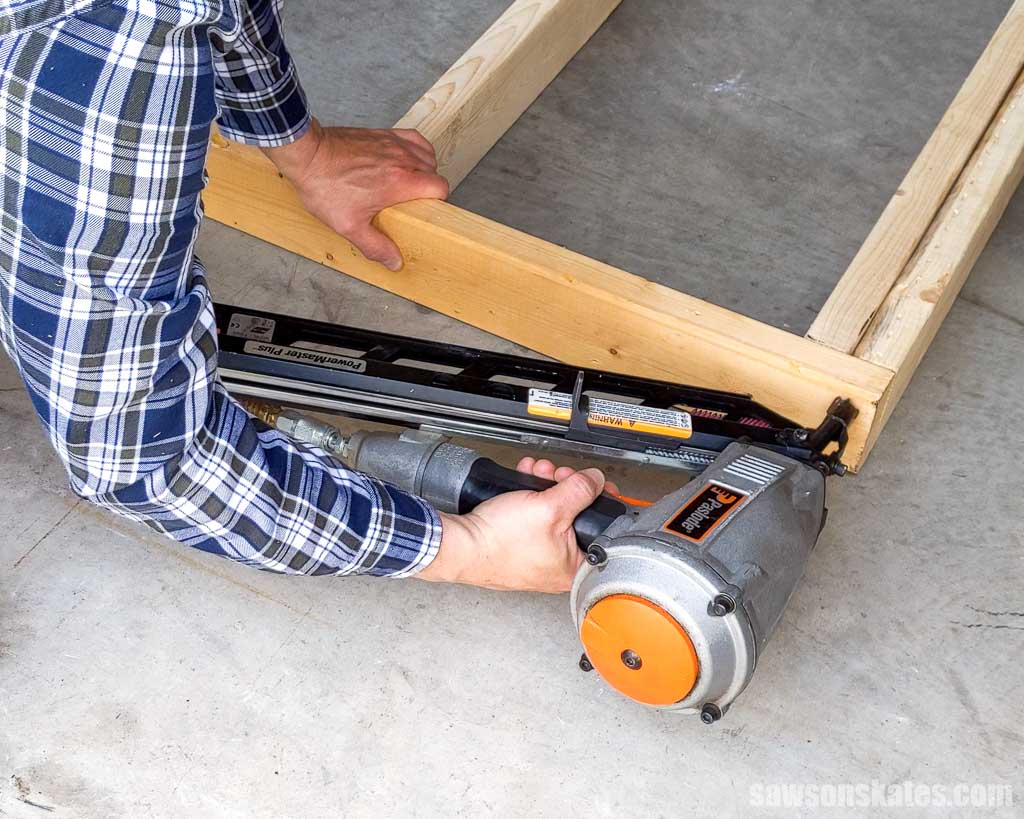
Framing nails offer incredible holding power making them ideal for projects requiring additional strength, such as joining 2×4 construction lumber, beams, and other large pieces of wood.
Related: Beginners Guide to Wood Sizes
They’re popular among professional carpenters, but they’re also used by DIYers working on large-scale home renovations.
Framing nailers are used for construction projects such as:
- Homebuilding
- Room additions
- Building a garage or shed
- Attaching roof sheathing
- Building a deck
- Building fences
When choosing a nailer, it is important to select one that uses nails compatible with the material you will be working with.
A framing nailer is best suited for heavy-duty tasks and may be too powerful for some delicate projects. The nails used in a framing nailer are large, which means there is a greater risk of cracking thinner pieces of wood. For this reason, a framing nailer is not suitable for installing thin, narrow molding.
Framing Nailer Pros and Cons
Pros
- Quicker and more efficient than a hammer
- Incredible power and holding strength
- Ideal for a variety of home building and construction projects
- 3 nail head options
Cons
- Too powerful for some DIY projects
- Large diameter nails may crack small pieces of wood
What is a Finish Nailer?
A finish nailer is a tool used to drive nails into wood. Finish nailers use either 15-gauge or 16-gauge nails which range in diameter from 0.0625 to 0.0800-inches and range in length from 1-inch to 2-½-inches.
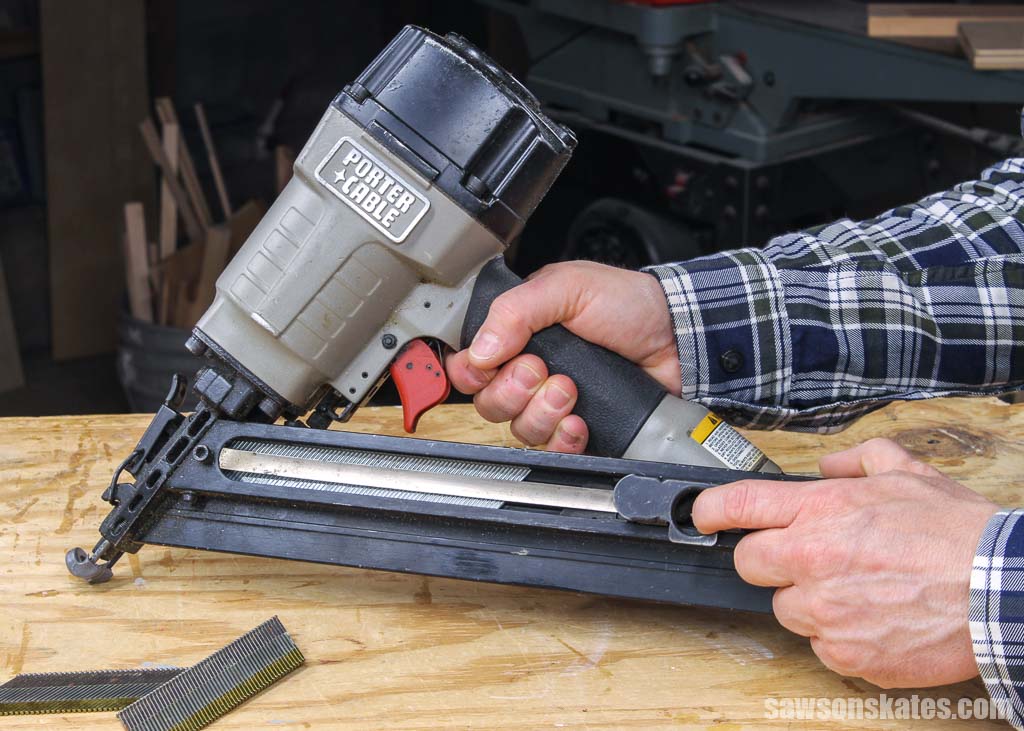
A brad nailer, which is sometimes called a finish nailer, is a different tool that uses smaller 18-gauge nails.
Related: Brad Nailer vs Finish Nailer: Which to Choose & Why
What are Finish Nailers Used For?
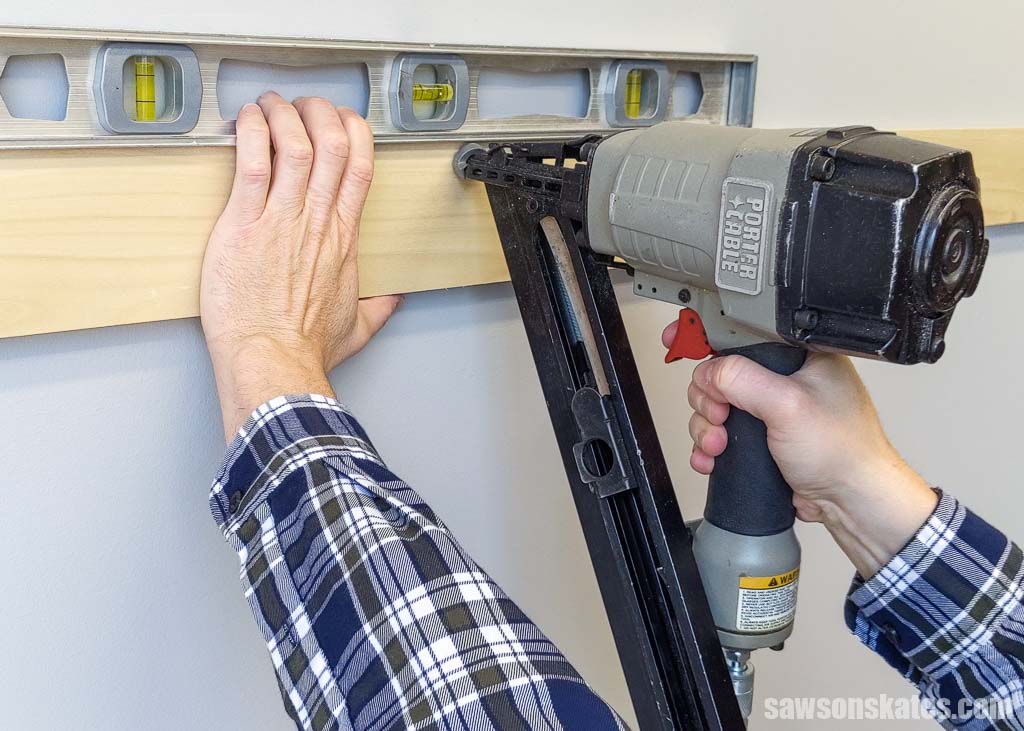
Finish nailers are commonly used for finish carpentry which is the process of installing wood trim and moldings, and creating other decorative woodworking details.
It’s called a finish nailer because it’s frequently used to put the finishing touches on a project after it’s been built.
Finish nails have the power to hold large moldings and boards in place, and can easily drive through hardwoods, MDF, and thick pieces of plywood. However, they lack the strength to join construction lumber such as 2×4s.
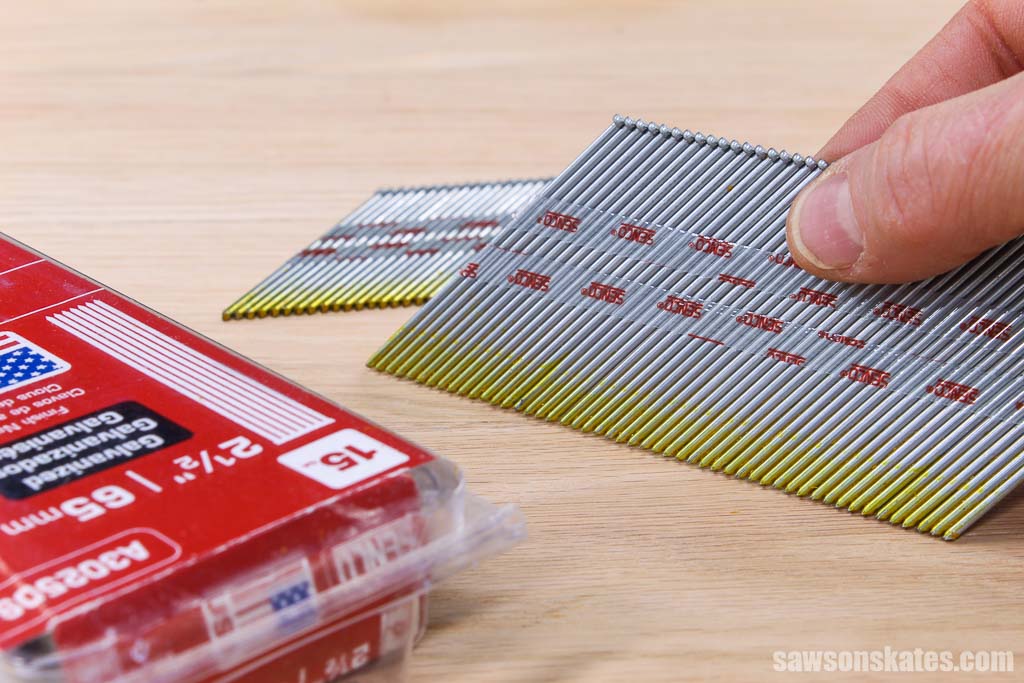
Finish nailers are used for carpentry and DIY projects such as:
- Installing baseboards
- Attaching window and door trim
- Installing chair rails
- Installing crown molding
- Attaching paneling
- Assembling staircases
- Attaching exterior trim
Finish Nailer Pros and Cons
Pros
- Quicker than using a hammer and nails
- Finish nails have a smaller diameter which makes them less likely to crack delicate moldings
- Ideal for installing baseboards, crown molding, chair rails, etc.
Cons
- Lacks the holding power to join construction lumber
What’s the Difference Between a Framing Nailer and a Finishing Nailer?
A framing nailer and a finishing nailer are both power tools used to drive nails into wood, but there are several significant differences between them.
Holding Power
A framing nailer is designed for heavy-duty tasks and has incredible holding power, making it ideal for construction projects where strength and durability are important. However, the nails used in a framing nailer are large, which means there is a greater risk of cracking smaller pieces of wood such as molding.
On the other hand, finish nailers have the power to hold moldings and trim pieces in place but lack the strength for joining construction lumber such as 2x4s.
Uses
Framing nailers are used to build houses, room additions, garages, and decks, while finish nailers are used to add finishing touches, such as installing wood trim and moldings after a project has been built.
Nail Size
A framing nailer uses much larger nails than a finish nailer. A framing nailer uses 8-gauge to 12-gauge nails which range in diameter from 0.113 to 0.162-inches, whereas finish nailers use either 15-gauge or 16-gauge nails which range in diameter from 0.0625 to 0.0800-inches.
Framing nails range in length from 1-¼ inches to 3-½ inches, while finishing nails range from 1 inch to 2-½ inches.
In the photo below, you can see the size difference between a framing nail (closest to the pencil) and the size of a finish nail (farthest from the pencil).
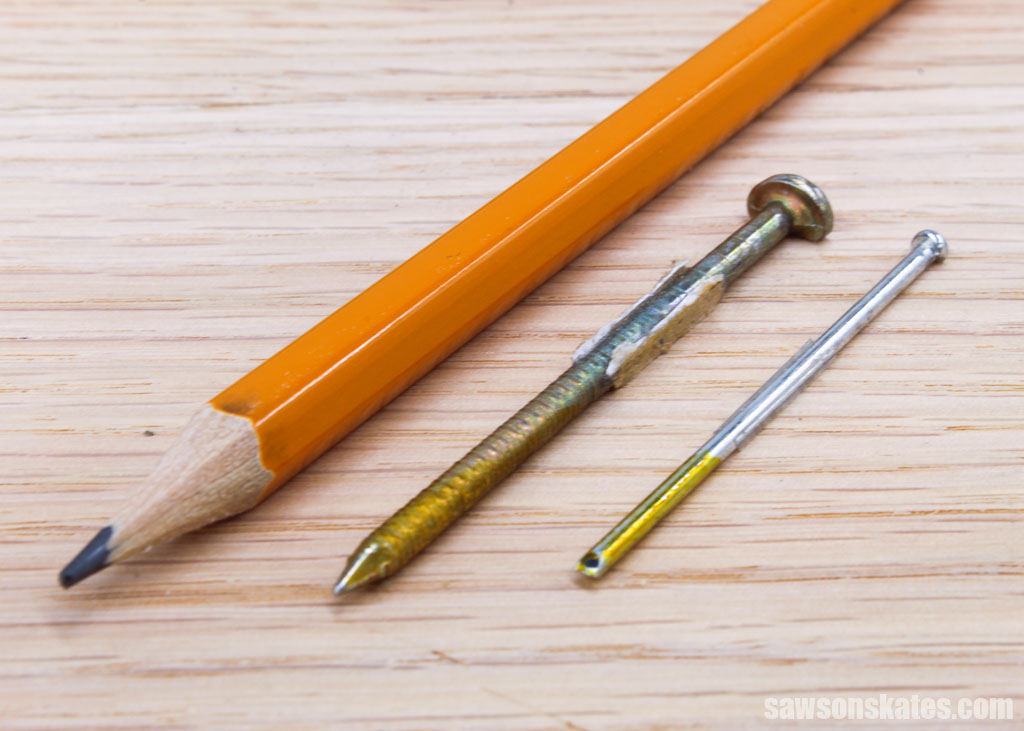
Accuracy
Framing nailers are less accurate than finish nailers because they are designed for quick, heavy-duty work. On the other hand, finish nailers are designed for precision and accuracy to ensure that moldings are installed perfectly straight.
Should I Buy a Framing Nailer or Finish Nailer?
Now that you know the difference between a finish nailer and a framing nailer, you can decide which tool is right for your project.
If you’re working on a project that requires strength and holding power, like building a house or deck, then you’ll need a framing nailer.
However, if you’re working on a project that requires accuracy and precision, such as installing wood trim or moldings, then you’ll want to use a finish nailer.
No matter what kind of nailer you choose, be sure to read the manufacturer’s instructions carefully before using the tool. And always wear safety goggles when working with any kind of power tool.
Pneumatic Nailers vs Cordless Nailers
There are more things to consider when it comes to choosing between a framing nailer and a finish nailer.
Pneumatic Nailers
Pneumatic nailers are powered by compressed air delivered from an air compressor through an air compressor hose to the nailer.
The advantage of using a pneumatic nailer is that you can continue working as long as the compressor is plugged into a power source.
However, pneumatic nailers have a number of drawbacks. Compressors are bulky and loud, and air hoses can get caught on objects like workbenches and ladders, which is inconvenient. Dragging the weight of the air hose may also be tiring on your arms if you’re working overhead.
Cordless Nailers
Cordless nailers are powered by rechargeable batteries, making them much more portable than pneumatic nailers. Cordless nailers also tend to be lighter and easier to maneuver than pneumatic nailers.
The downside of a cordless nailer is that the battery may die in the middle of a project, so you’ll have to stop working and recharge the battery before continuing.
Cordless nailers are also more expensive than pneumatic nailers.
Pneumatic or Cordless?
Consider how important portability is to you when deciding between a pneumatic nailer and a cordless nailer. If you need to move around a lot, a cordless framing nailer or cordless finish nailer may be the better choice.
However, if you don’t mind being tethered to an air compressor, a pneumatic framing nailer or pneumatic finish nailer will probably serve you better. Pneumatic nailers are also generally less expensive than cordless nailers, but they also require an air compressor, which is an additional cost.
Frequently Asked Questions
Can a finish nailer be used for framing?
No, a finish nailer cannot be used for framing. The nails used in a finish nailer are not long or strong enough to properly join construction lumber.
Can you use a framing nailer for molding?
No, you cannot use a framing nailer for molding. The nails used in a framing nailer are much too large and will crack smaller pieces of wood, such as moldings.
Final Thoughts
A finish nailer and framing nailer are both handy tools, but it’s important to choose the right one for the job. A framing nailer should be used when strength and holding power are important, such as building a house or deck. A finish nailer should be used when accuracy and precision are important, such as installing wood trim or moldings.

